
07 September 2024

(Image: Adobe)
In our article last week, we considered new international partnership models as a means of securing the peaceful and sustainable development of space, and noted that addressing the immediate problem of space debris could be an area where this could emerge. In an article this week from Phys.org, legal expert Zhuang Tian discussed some of the legal hurdles in removing dangerous orbital debris but also highlighted areas where cooperation and transparency could be expanded.
Tian explains that while there are several national efforts, spearheaded by commercial entities, aimed at demonstrating debris removal, cleanup missions can currently only focus on debris that is their own property. Space law determines that objects remain the ownership of the launching state, even if no longer in use, as laid out in the UN Registration Convention (1974). This presents two problems: that collecting debris from another state could be perceived as a hostile act, and that it remains the responsibility of each state to manage their own debris removal efforts.
With debris becoming an increasing concern, especially considering the spiralling numbers of satellites being launched under mega-constellation plans from entities such as Starlink (US), G60 (China), and Guowang (China), sustainability efforts in orbit are vital to maintaining a safe and operational environment.
Tian suggests that there “needs to be an international mechanism that makes it easier for countries and space agencies to request and grant permission” when targeting debris removal. Furthermore, he adds that nations should commit to multilateral and unilateral agreements, and that soft law instruments could provide a solution. Instruments such as the UN Space Debris Mitigation Guidelines (2007), which provide guidelines to reduce the creation of space debris, are examples.
We could also suggest that the matter be discussed more globally, as part of UN-led sustainability initiatives, such as the 17 Sustainable Development Goals (SDGs). Space technology is seen as an enabler of the SDGs, providing critical support in areas such as climate monitoring, agricultural productivity, and urban planning, among others.
However, space can only help improve our lives on Earth as long as we can maintain space now and for future generations, and this is where national and industry leaders may come together for mutually beneficial outcomes.
Space-based solar power, space data storage efforts
Space technology is also being explored as a means of meeting our clean energy demands, which could provide more opportunities for cooperation and collaboration. In August, experts from both the US and China expressed that this field could provide opportunities for cooperation through the development of space-based solar power (SBSP).
Wang Zhen, a research professor of international politics at the Institute of International Relations of the Shanghai Academy of Social Sciences, told China Daily that "cooperation between the US and China will strengthen both countries and benefit the world,” with China being a leader in solar power and electric vehicles, while the US has strengths in AI and software development. Last week, we also discussed the comments from Daniel Kammen, a professor of energy at the University of California, who said that the US and China could challenge each other to collaborate on SBSP.
The technology is currently being researched by the European Space Agency (ESA) through their SOLARIS project, which aims to conclude a study on the feasibility of SBSP by next year. Additionally, in April UK startup Space Solar tested their device for wirelessly beaming energy 360 degrees around the world, as part of the CASSIOPeiA space-based solar power plant project, led by International Electric Company (IECL), a UK-based aerospace and clean energy firm. China is also aiming to build a gigawatt-level space-based power station.
This week, the University of Toledo (US) announced that it will receive up to $15 million from the Air Force Research Laboratory to support a team of physicists exploring new ways to harvest solar energy in outer space. The project will build on their years of research into thin-film solar technology and study how the technology can withstand the harsh space environment while collecting large amounts of solar energy.
Space-based solar is also being touted as a way to meet our rapidly growing energy needs for data storage and energy-consumptive AI applications. An article from Information Week discussed this area, adding that Thales Alenia (France/Italy) has “found promising results for the technological and environmental feasibility of launching data centres into space.”
Lonestar Data Holdings (US) has already demonstrated the feasibility of data centres on the Moon as part of their Independence Payload aboard Intuitive Machines' lunar landing in February this year. Their technology is promoted as providing secure off-world data storage through Disaster Recovery as a Service (DRaaS) from the Moon.
However, orbital data centres may provide sustainable energy storage solutions closer to Earth. With data storage demands becoming an increasingly global challenge, this is perhaps another area where global collaboration could be established and promoted.
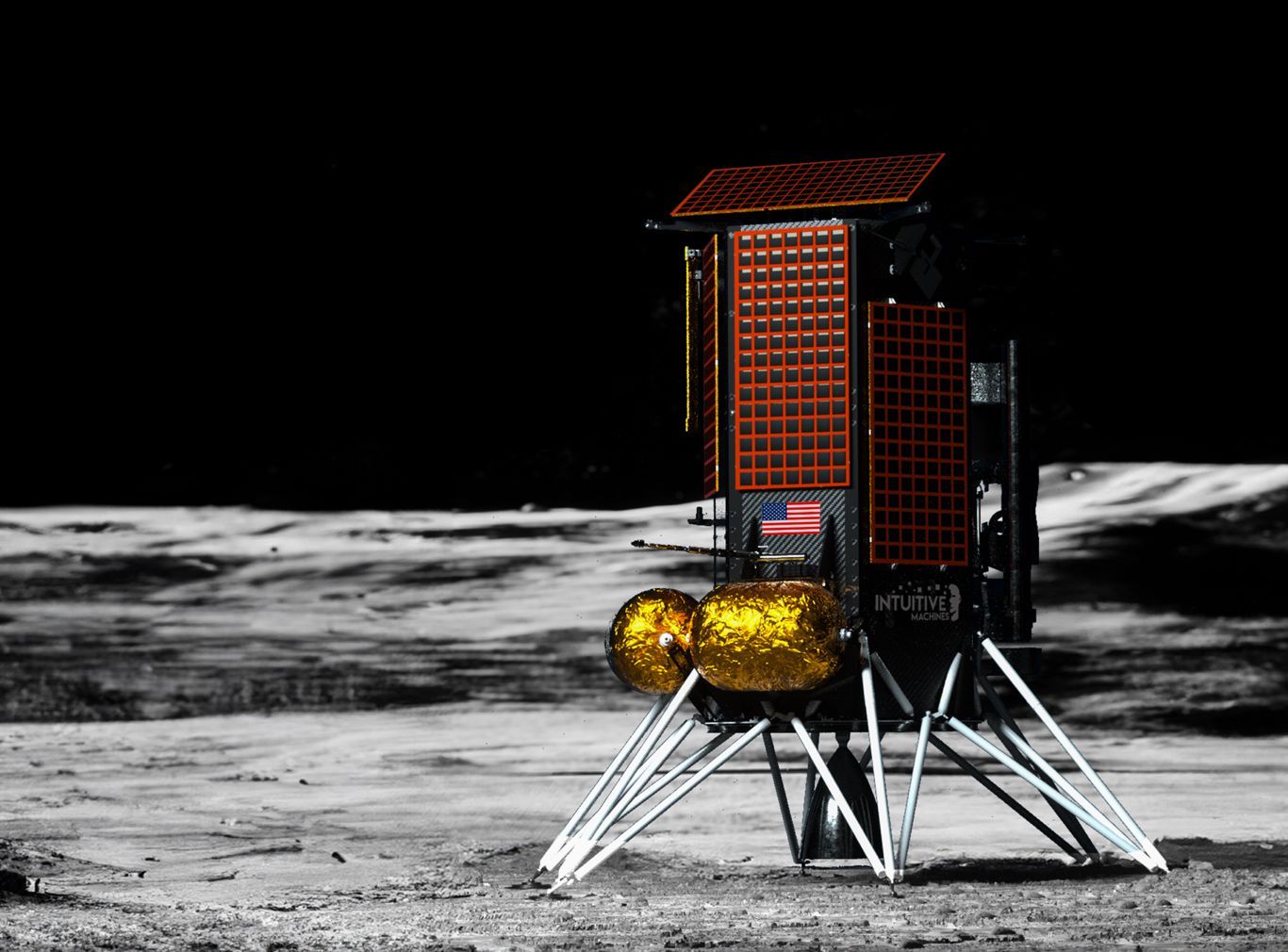
(Image: Intuitive Machines)
China grow ILRS alliance, ESA to send Moon lab, MIT, iSpace and Airbus present lunar rovers
The new age of lunar exploration and utilisation continues to provide both opportunities and challenges. As we often report, international law remains ambiguous in relation to the increasingly valuable area of resource extraction, and there are yet to be universally agreed-upon frameworks to encourage truly peaceful and sustainable development of the Moon.
However, collaborative efforts are underway. This week, Senegal became the latest nation to sign on to China’s International Lunar Research Station (ILRS) project, aimed at establishing a lunar base by 2035. China is also looking to add more African nations to its lunar cooperative, which now boasts 13 nations and over 40 organisations and institutions, while the US-led Artemis Accords currently have 43 member states.
While it remains unlikely that the US and China would be willing to join each other’s frameworks, technology and scientific partnerships can also provide a means of establishing closer ties on the Moon.
Lunar exploration company iSpace (Japan) delivered its Tenacious lunar rover to Japan this week, in preparation for launch aboard its Resilience lander later this year. The mission will be iSpace’s second attempt to land safely on the Moon, following their failed attempt in April 2023. It also represents a Japan-European-US collaboration, with the rover being built in Luxembourg and the launch being carried out by SpaceX from Cape Canaveral later this year.
Furthermore, ESA has shared details about its “Prospect” package, a miniaturised lab and drill that will be sent to the Moon to dig into the subsurface in search of water ice and other volatiles. The package will launch as part of the Intuitive Machines 2027 lunar mission, recently announced as part of NASA’s Commercial Lunar Payload Services program. ESA had already declared its interest in working with Intuitive Machines after their successful lunar landing earlier this year.
Commercial partnerships also continue to pave the way for collaboration. For example, MIT researchers are working with British oil company Castrol on a project to introduce AstrAnt, a miniature lunar rover designed for lunar exploration. The small robotic vehicles are designed to work in swarms, carrying out inspections on spacecraft, rovers, and landers. This project is an example of non-space companies entering the sector, demonstrating the overall expansion of commercial interest in space exploration.
Commercially-driven investment by both space and non-space entities has the potential to provide another avenue for collaboration and the formation of new strategies for peaceful uses and development in outer space.
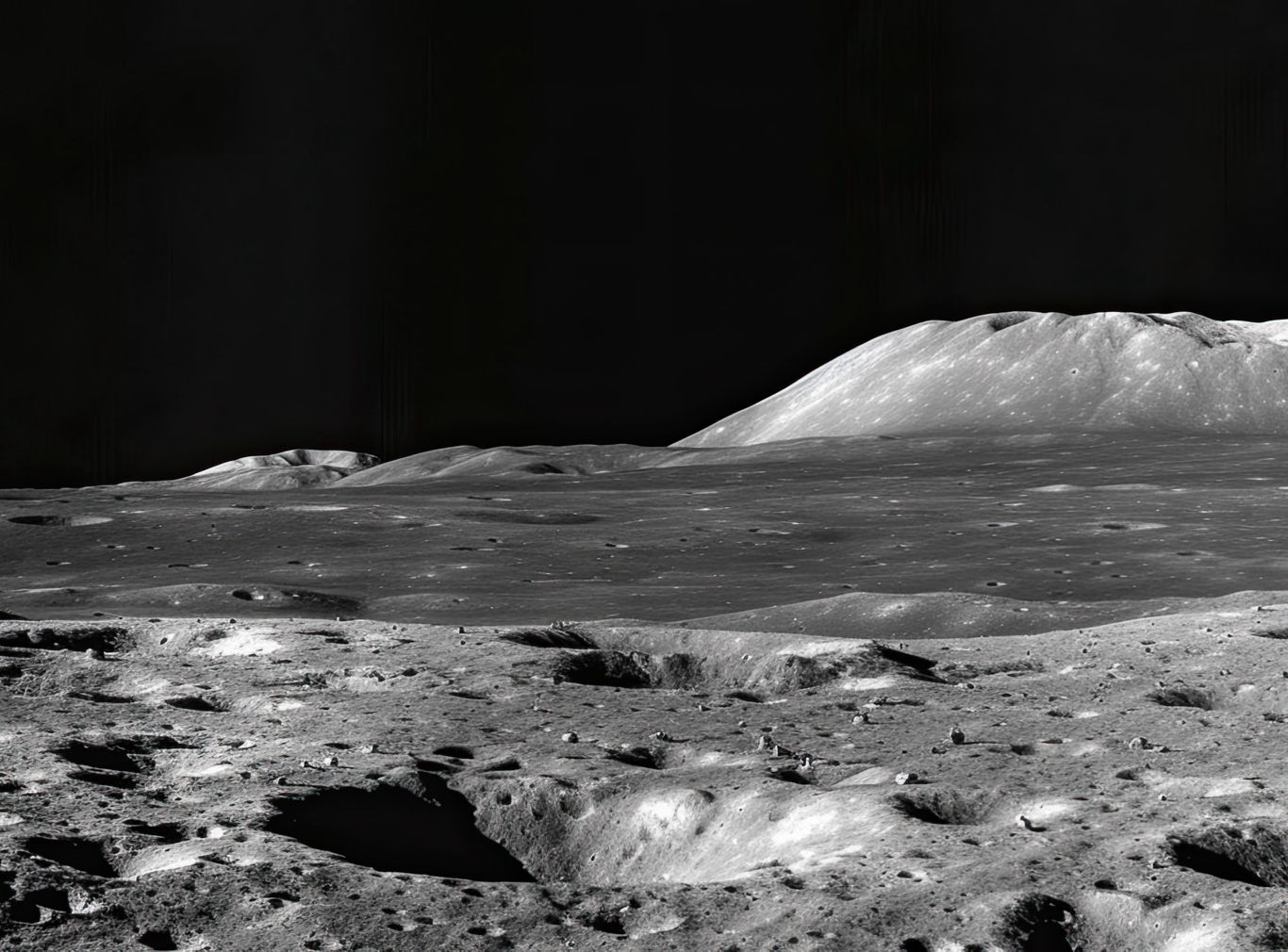
(Image: Adobe)
Space no longer a neutral arena, as US presidential race highlights politicisation
Last week, the United Nations Office for Outer Space Affairs released its report from the 67th meeting of the Committee on Peaceful Uses of Outer Space. In the general statements, it was noted that "some delegations expressed the view that the politicisation of the work of the Committee was a serious concern, especially when issues beyond its mandate were brought before the Committee."
Political neutrality is critical, especially at UN-level, when brokering the development of new policies, treaties, and frameworks to establish and maintain the peaceful and sustainable uses of space.
We are in an age of a new “undeclared space race” between the US and China, according to Alex Lo, writing for the South China Morning Post on September 1st. NASA head Bill Nelson has repeatedly warned of a race with China to the Moon, fearing a land-grab for resources under the guise of scientific exploration. Furthermore, a US House discussion in December last year turned into a partisan debate on space mining, with some voicing concern about securing off-world resources.
There is also the issue of the use of commercial satellite technology in military conflicts, such as the use of Starlink in the Ukraine conflict. In March 2024, Russia cautioned against the use of commercial entities in conflicts, stating that they could become “legitimate military targets for retaliatory measures,” according to Foreign Ministry Spokeswoman Maria Zakharova.
With increasing value being placed on the space industry and outer space exploration, it is inevitable that space is becoming a political and geopolitical challenge. Writing for The Hill last week, Mark R. Whittington said that “the nonpartisan nature of space policy may be about to change” in relation to the upcoming US presidential election. The article primarily addressed the domestic situation in the US, particularly the ongoing problems with Boeing’s Starliner vehicle. Eric Trump (son of Donald Trump) blamed Kamala Harris, chair of the National Space Council, for the issues.
It appears that space is destined to climb higher on both the national and international political agendas, especially as commercial value continues to increase. While the UN's role remains to provide a platform for dialogue and diplomacy, experts, policymakers, leaders, and all stakeholders must remain aware of the increasingly politically driven nature of space affairs. It’s only with real awareness that political concerns can be addressed, or better, to utilise space politics as a force for good.


(Image: Adobe)
07 September 2024
Sustainability Models for Cooperation, Latest Projects in Lunar Collaboration and the Ongoing Politicisation of Space - Space News Roundup

In our article last week, we considered new international partnership models as a means of securing the peaceful and sustainable development of space, and noted that addressing the immediate problem of space debris could be an area where this could emerge. In an article this week from Phys.org, legal expert Zhuang Tian discussed some of the legal hurdles in removing dangerous orbital debris but also highlighted areas where cooperation and transparency could be expanded.
Tian explains that while there are several national efforts, spearheaded by commercial entities, aimed at demonstrating debris removal, cleanup missions can currently only focus on debris that is their own property. Space law determines that objects remain the ownership of the launching state, even if no longer in use, as laid out in the UN Registration Convention (1974). This presents two problems: that collecting debris from another state could be perceived as a hostile act, and that it remains the responsibility of each state to manage their own debris removal efforts.
With debris becoming an increasing concern, especially considering the spiralling numbers of satellites being launched under mega-constellation plans from entities such as Starlink (US), G60 (China), and Guowang (China), sustainability efforts in orbit are vital to maintaining a safe and operational environment.
Tian suggests that there “needs to be an international mechanism that makes it easier for countries and space agencies to request and grant permission” when targeting debris removal. Furthermore, he adds that nations should commit to multilateral and unilateral agreements, and that soft law instruments could provide a solution. Instruments such as the UN Space Debris Mitigation Guidelines (2007), which provide guidelines to reduce the creation of space debris, are examples.
We could also suggest that the matter be discussed more globally, as part of UN-led sustainability initiatives, such as the 17 Sustainable Development Goals (SDGs). Space technology is seen as an enabler of the SDGs, providing critical support in areas such as climate monitoring, agricultural productivity, and urban planning, among others.
However, space can only help improve our lives on Earth as long as we can maintain space now and for future generations, and this is where national and industry leaders may come together for mutually beneficial outcomes.
Space-based solar power, space data storage efforts
Space technology is also being explored as a means of meeting our clean energy demands, which could provide more opportunities for cooperation and collaboration. In August, experts from both the US and China expressed that this field could provide opportunities for cooperation through the development of space-based solar power (SBSP).
Wang Zhen, a research professor of international politics at the Institute of International Relations of the Shanghai Academy of Social Sciences, told China Daily that "cooperation between the US and China will strengthen both countries and benefit the world,” with China being a leader in solar power and electric vehicles, while the US has strengths in AI and software development. Last week, we also discussed the comments from Daniel Kammen, a professor of energy at the University of California, who said that the US and China could challenge each other to collaborate on SBSP.
The technology is currently being researched by the European Space Agency (ESA) through their SOLARIS project, which aims to conclude a study on the feasibility of SBSP by next year. Additionally, in April UK startup Space Solar tested their device for wirelessly beaming energy 360 degrees around the world, as part of the CASSIOPeiA space-based solar power plant project, led by International Electric Company (IECL), a UK-based aerospace and clean energy firm. China is also aiming to build a gigawatt-level space-based power station.
This week, the University of Toledo (US) announced that it will receive up to $15 million from the Air Force Research Laboratory to support a team of physicists exploring new ways to harvest solar energy in outer space. The project will build on their years of research into thin-film solar technology and study how the technology can withstand the harsh space environment while collecting large amounts of solar energy.
Space-based solar is also being touted as a way to meet our rapidly growing energy needs for data storage and energy-consumptive AI applications. An article from Information Week discussed this area, adding that Thales Alenia (France/Italy) has “found promising results for the technological and environmental feasibility of launching data centres into space.”
Lonestar Data Holdings (US) has already demonstrated the feasibility of data centres on the Moon as part of their Independence Payload aboard Intuitive Machines' lunar landing in February this year. Their technology is promoted as providing secure off-world data storage through Disaster Recovery as a Service (DRaaS) from the Moon.
However, orbital data centres may provide sustainable energy storage solutions closer to Earth. With data storage demands becoming an increasingly global challenge, this is perhaps another area where global collaboration could be established and promoted.
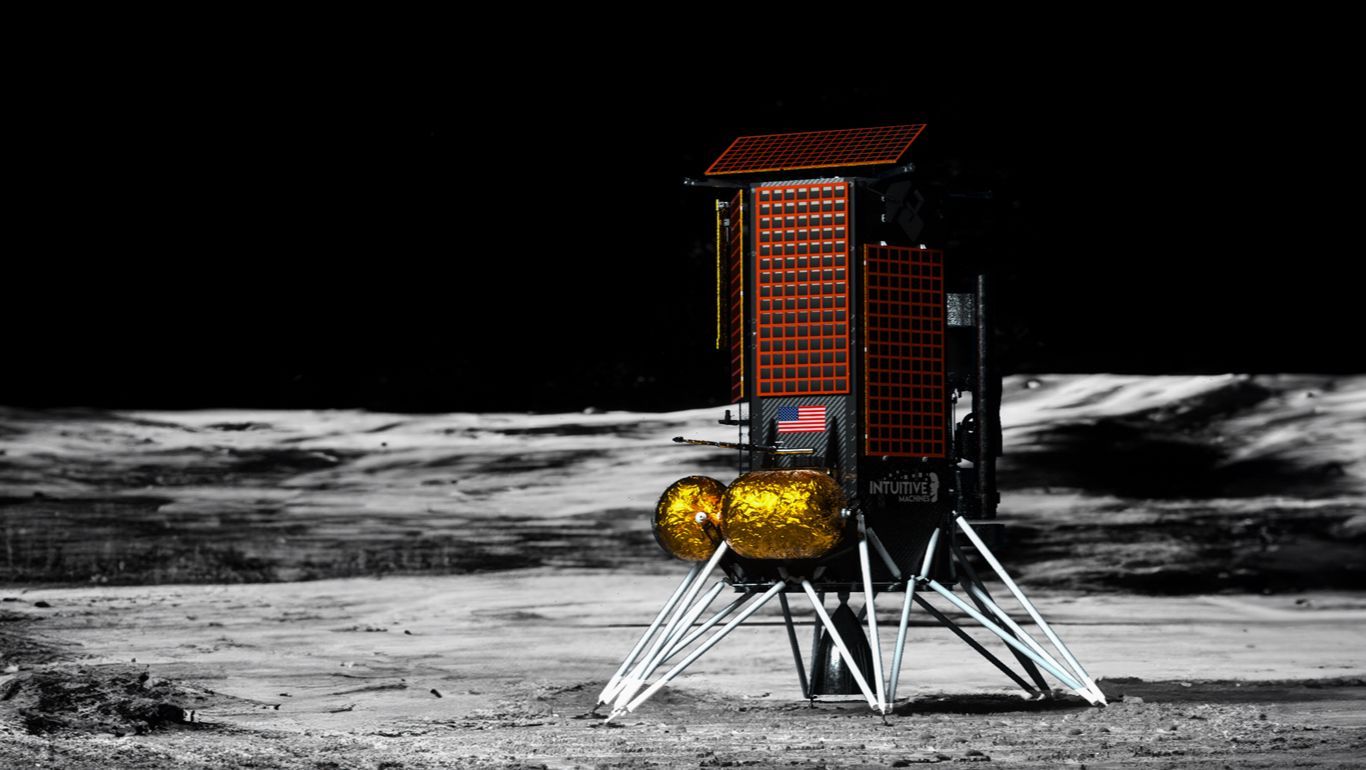
(Image: Intuitive Machines)
China grow ILRS alliance, ESA to send Moon lab, MIT, iSpace and Airbus present lunar rovers
The new age of lunar exploration and utilisation continues to provide both opportunities and challenges. As we often report, international law remains ambiguous in relation to the increasingly valuable area of resource extraction, and there are yet to be universally agreed-upon frameworks to encourage truly peaceful and sustainable development of the Moon.
However, collaborative efforts are underway. This week, Senegal became the latest nation to sign on to China’s International Lunar Research Station (ILRS) project, aimed at establishing a lunar base by 2035. China is also looking to add more African nations to its lunar cooperative, which now boasts 13 nations and over 40 organisations and institutions, while the US-led Artemis Accords currently have 43 member states.
While it remains unlikely that the US and China would be willing to join each other’s frameworks, technology and scientific partnerships can also provide a means of establishing closer ties on the Moon.
Lunar exploration company iSpace (Japan) delivered its Tenacious lunar rover to Japan this week, in preparation for launch aboard its Resilience lander later this year. The mission will be iSpace’s second attempt to land safely on the Moon, following their failed attempt in April 2023. It also represents a Japan-European-US collaboration, with the rover being built in Luxembourg and the launch being carried out by SpaceX from Cape Canaveral later this year.
Furthermore, ESA has shared details about its “Prospect” package, a miniaturised lab and drill that will be sent to the Moon to dig into the subsurface in search of water ice and other volatiles. The package will launch as part of the Intuitive Machines 2027 lunar mission, recently announced as part of NASA’s Commercial Lunar Payload Services program. ESA had already declared its interest in working with Intuitive Machines after their successful lunar landing earlier this year.
Commercial partnerships also continue to pave the way for collaboration. For example, MIT researchers are working with British oil company Castrol on a project to introduce AstrAnt, a miniature lunar rover designed for lunar exploration. The small robotic vehicles are designed to work in swarms, carrying out inspections on spacecraft, rovers, and landers. This project is an example of non-space companies entering the sector, demonstrating the overall expansion of commercial interest in space exploration.
Commercially-driven investment by both space and non-space entities has the potential to provide another avenue for collaboration and the formation of new strategies for peaceful uses and development in outer space.
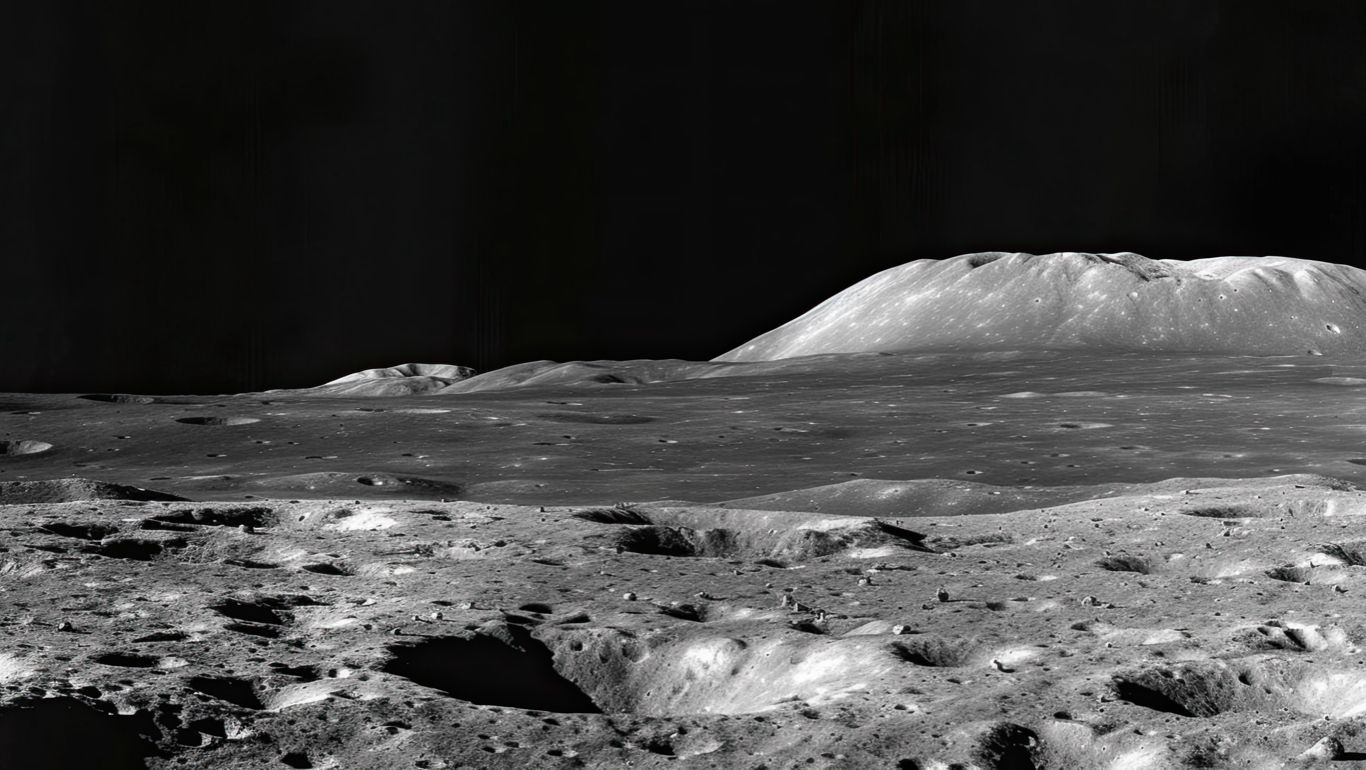
(Image: Adobe)
Space no longer a neutral arena, as US presidential race highlights politicisation
Last week, the United Nations Office for Outer Space Affairs released its report from the 67th meeting of the Committee on Peaceful Uses of Outer Space. In the general statements, it was noted that "some delegations expressed the view that the politicisation of the work of the Committee was a serious concern, especially when issues beyond its mandate were brought before the Committee."
Political neutrality is critical, especially at UN-level, when brokering the development of new policies, treaties, and frameworks to establish and maintain the peaceful and sustainable uses of space.
We are in an age of a new “undeclared space race” between the US and China, according to Alex Lo, writing for the South China Morning Post on September 1st. NASA head Bill Nelson has repeatedly warned of a race with China to the Moon, fearing a land-grab for resources under the guise of scientific exploration. Furthermore, a US House discussion in December last year turned into a partisan debate on space mining, with some voicing concern about securing off-world resources.
There is also the issue of the use of commercial satellite technology in military conflicts, such as the use of Starlink in the Ukraine conflict. In March 2024, Russia cautioned against the use of commercial entities in conflicts, stating that they could become “legitimate military targets for retaliatory measures,” according to Foreign Ministry Spokeswoman Maria Zakharova.
With increasing value being placed on the space industry and outer space exploration, it is inevitable that space is becoming a political and geopolitical challenge. Writing for The Hill last week, Mark R. Whittington said that “the nonpartisan nature of space policy may be about to change” in relation to the upcoming US presidential election. The article primarily addressed the domestic situation in the US, particularly the ongoing problems with Boeing’s Starliner vehicle. Eric Trump (son of Donald Trump) blamed Kamala Harris, chair of the National Space Council, for the issues.
It appears that space is destined to climb higher on both the national and international political agendas, especially as commercial value continues to increase. While the UN's role remains to provide a platform for dialogue and diplomacy, experts, policymakers, leaders, and all stakeholders must remain aware of the increasingly politically driven nature of space affairs. It’s only with real awareness that political concerns can be addressed, or better, to utilise space politics as a force for good.
Share this article


07 September 2024
Sustainability Models for Cooperation, Latest Projects in Lunar Collaboration and the Ongoing Politicisation of Space - Space News Roundup


(Image: Adobe)
In our article last week, we considered new international partnership models as a means of securing the peaceful and sustainable development of space, and noted that addressing the immediate problem of space debris could be an area where this could emerge. In an article this week from Phys.org, legal expert Zhuang Tian discussed some of the legal hurdles in removing dangerous orbital debris but also highlighted areas where cooperation and transparency could be expanded.
Tian explains that while there are several national efforts, spearheaded by commercial entities, aimed at demonstrating debris removal, cleanup missions can currently only focus on debris that is their own property. Space law determines that objects remain the ownership of the launching state, even if no longer in use, as laid out in the UN Registration Convention (1974). This presents two problems: that collecting debris from another state could be perceived as a hostile act, and that it remains the responsibility of each state to manage their own debris removal efforts.
With debris becoming an increasing concern, especially considering the spiralling numbers of satellites being launched under mega-constellation plans from entities such as Starlink (US), G60 (China), and Guowang (China), sustainability efforts in orbit are vital to maintaining a safe and operational environment.
Tian suggests that there “needs to be an international mechanism that makes it easier for countries and space agencies to request and grant permission” when targeting debris removal. Furthermore, he adds that nations should commit to multilateral and unilateral agreements, and that soft law instruments could provide a solution. Instruments such as the UN Space Debris Mitigation Guidelines (2007), which provide guidelines to reduce the creation of space debris, are examples.
We could also suggest that the matter be discussed more globally, as part of UN-led sustainability initiatives, such as the 17 Sustainable Development Goals (SDGs). Space technology is seen as an enabler of the SDGs, providing critical support in areas such as climate monitoring, agricultural productivity, and urban planning, among others.
However, space can only help improve our lives on Earth as long as we can maintain space now and for future generations, and this is where national and industry leaders may come together for mutually beneficial outcomes.
Space-based solar power, space data storage efforts
Space technology is also being explored as a means of meeting our clean energy demands, which could provide more opportunities for cooperation and collaboration. In August, experts from both the US and China expressed that this field could provide opportunities for cooperation through the development of space-based solar power (SBSP).
Wang Zhen, a research professor of international politics at the Institute of International Relations of the Shanghai Academy of Social Sciences, told China Daily that "cooperation between the US and China will strengthen both countries and benefit the world,” with China being a leader in solar power and electric vehicles, while the US has strengths in AI and software development. Last week, we also discussed the comments from Daniel Kammen, a professor of energy at the University of California, who said that the US and China could challenge each other to collaborate on SBSP.
The technology is currently being researched by the European Space Agency (ESA) through their SOLARIS project, which aims to conclude a study on the feasibility of SBSP by next year. Additionally, in April UK startup Space Solar tested their device for wirelessly beaming energy 360 degrees around the world, as part of the CASSIOPeiA space-based solar power plant project, led by International Electric Company (IECL), a UK-based aerospace and clean energy firm. China is also aiming to build a gigawatt-level space-based power station.
This week, the University of Toledo (US) announced that it will receive up to $15 million from the Air Force Research Laboratory to support a team of physicists exploring new ways to harvest solar energy in outer space. The project will build on their years of research into thin-film solar technology and study how the technology can withstand the harsh space environment while collecting large amounts of solar energy.
Space-based solar is also being touted as a way to meet our rapidly growing energy needs for data storage and energy-consumptive AI applications. An article from Information Week discussed this area, adding that Thales Alenia (France/Italy) has “found promising results for the technological and environmental feasibility of launching data centres into space.”
Lonestar Data Holdings (US) has already demonstrated the feasibility of data centres on the Moon as part of their Independence Payload aboard Intuitive Machines' lunar landing in February this year. Their technology is promoted as providing secure off-world data storage through Disaster Recovery as a Service (DRaaS) from the Moon.
However, orbital data centres may provide sustainable energy storage solutions closer to Earth. With data storage demands becoming an increasingly global challenge, this is perhaps another area where global collaboration could be established and promoted.
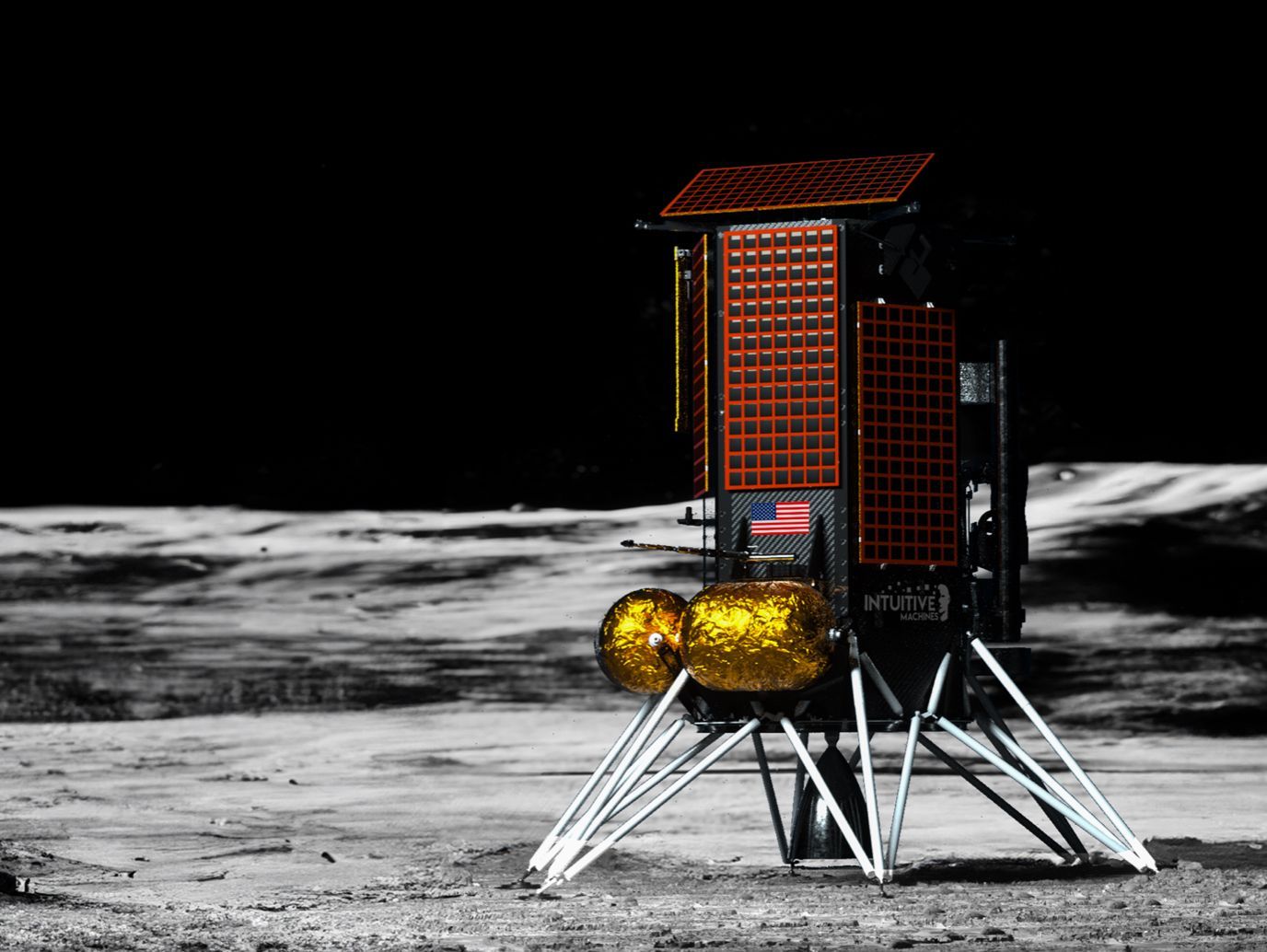
(Image: Intuitive Machines)
China grow ILRS alliance, ESA to send Moon lab, MIT, iSpace and Airbus present lunar rovers
The new age of lunar exploration and utilisation continues to provide both opportunities and challenges. As we often report, international law remains ambiguous in relation to the increasingly valuable area of resource extraction, and there are yet to be universally agreed-upon frameworks to encourage truly peaceful and sustainable development of the Moon.
However, collaborative efforts are underway. This week, Senegal became the latest nation to sign on to China’s International Lunar Research Station (ILRS) project, aimed at establishing a lunar base by 2035. China is also looking to add more African nations to its lunar cooperative, which now boasts 13 nations and over 40 organisations and institutions, while the US-led Artemis Accords currently have 43 member states.
While it remains unlikely that the US and China would be willing to join each other’s frameworks, technology and scientific partnerships can also provide a means of establishing closer ties on the Moon.
Lunar exploration company iSpace (Japan) delivered its Tenacious lunar rover to Japan this week, in preparation for launch aboard its Resilience lander later this year. The mission will be iSpace’s second attempt to land safely on the Moon, following their failed attempt in April 2023. It also represents a Japan-European-US collaboration, with the rover being built in Luxembourg and the launch being carried out by SpaceX from Cape Canaveral later this year.
Furthermore, ESA has shared details about its “Prospect” package, a miniaturised lab and drill that will be sent to the Moon to dig into the subsurface in search of water ice and other volatiles. The package will launch as part of the Intuitive Machines 2027 lunar mission, recently announced as part of NASA’s Commercial Lunar Payload Services program. ESA had already declared its interest in working with Intuitive Machines after their successful lunar landing earlier this year.
Commercial partnerships also continue to pave the way for collaboration. For example, MIT researchers are working with British oil company Castrol on a project to introduce AstrAnt, a miniature lunar rover designed for lunar exploration. The small robotic vehicles are designed to work in swarms, carrying out inspections on spacecraft, rovers, and landers. This project is an example of non-space companies entering the sector, demonstrating the overall expansion of commercial interest in space exploration.
Commercially-driven investment by both space and non-space entities has the potential to provide another avenue for collaboration and the formation of new strategies for peaceful uses and development in outer space.
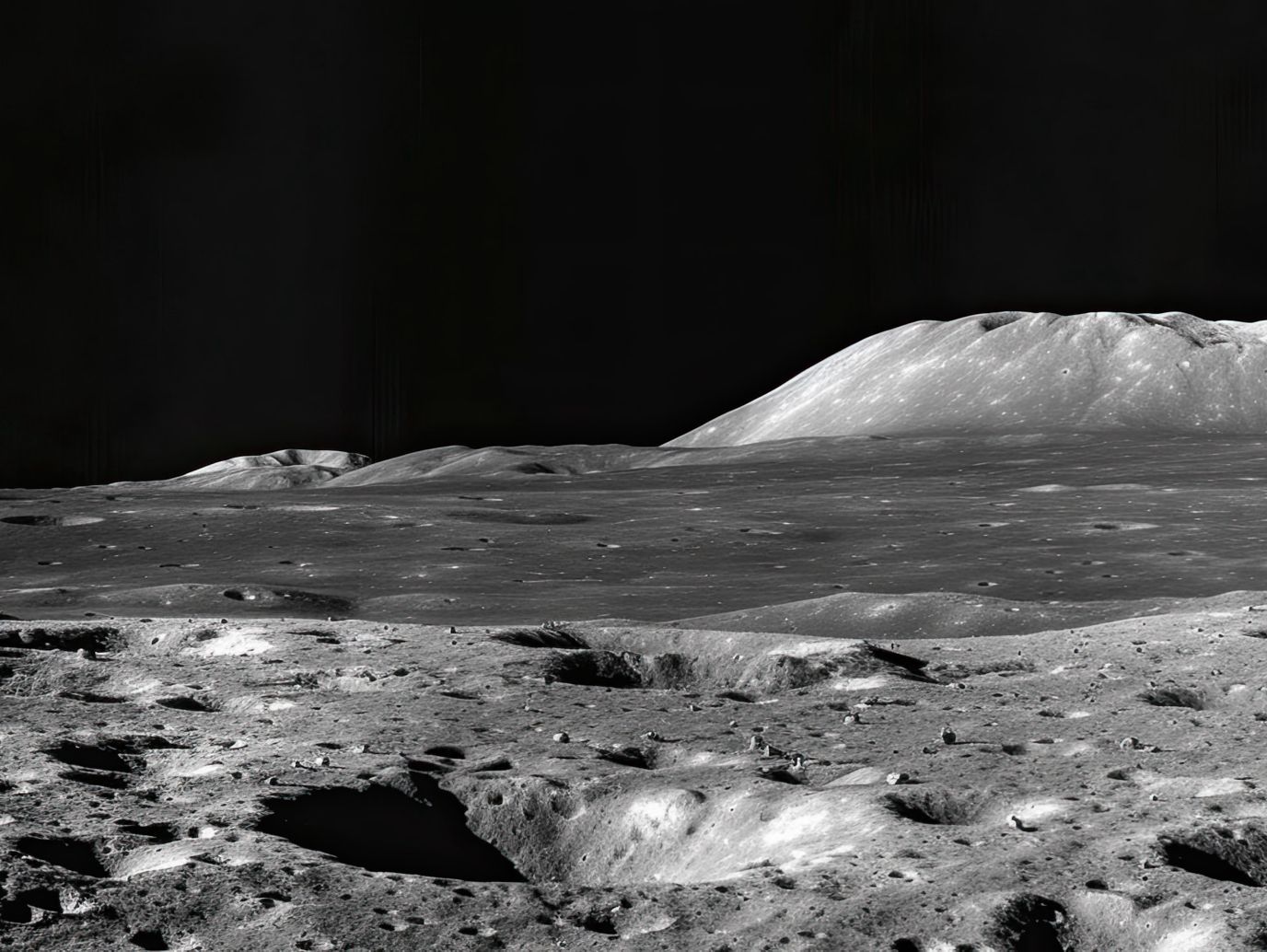
(Image: Adobe)
Space no longer a neutral arena, as US presidential race highlights politicisation
Last week, the United Nations Office for Outer Space Affairs released its report from the 67th meeting of the Committee on Peaceful Uses of Outer Space. In the general statements, it was noted that "some delegations expressed the view that the politicisation of the work of the Committee was a serious concern, especially when issues beyond its mandate were brought before the Committee."
Political neutrality is critical, especially at UN-level, when brokering the development of new policies, treaties, and frameworks to establish and maintain the peaceful and sustainable uses of space.
We are in an age of a new “undeclared space race” between the US and China, according to Alex Lo, writing for the South China Morning Post on September 1st. NASA head Bill Nelson has repeatedly warned of a race with China to the Moon, fearing a land-grab for resources under the guise of scientific exploration. Furthermore, a US House discussion in December last year turned into a partisan debate on space mining, with some voicing concern about securing off-world resources.
There is also the issue of the use of commercial satellite technology in military conflicts, such as the use of Starlink in the Ukraine conflict. In March 2024, Russia cautioned against the use of commercial entities in conflicts, stating that they could become “legitimate military targets for retaliatory measures,” according to Foreign Ministry Spokeswoman Maria Zakharova.
With increasing value being placed on the space industry and outer space exploration, it is inevitable that space is becoming a political and geopolitical challenge. Writing for The Hill last week, Mark R. Whittington said that “the nonpartisan nature of space policy may be about to change” in relation to the upcoming US presidential election. The article primarily addressed the domestic situation in the US, particularly the ongoing problems with Boeing’s Starliner vehicle. Eric Trump (son of Donald Trump) blamed Kamala Harris, chair of the National Space Council, for the issues.
It appears that space is destined to climb higher on both the national and international political agendas, especially as commercial value continues to increase. While the UN's role remains to provide a platform for dialogue and diplomacy, experts, policymakers, leaders, and all stakeholders must remain aware of the increasingly politically driven nature of space affairs. It’s only with real awareness that political concerns can be addressed, or better, to utilise space politics as a force for good.
Share this article

